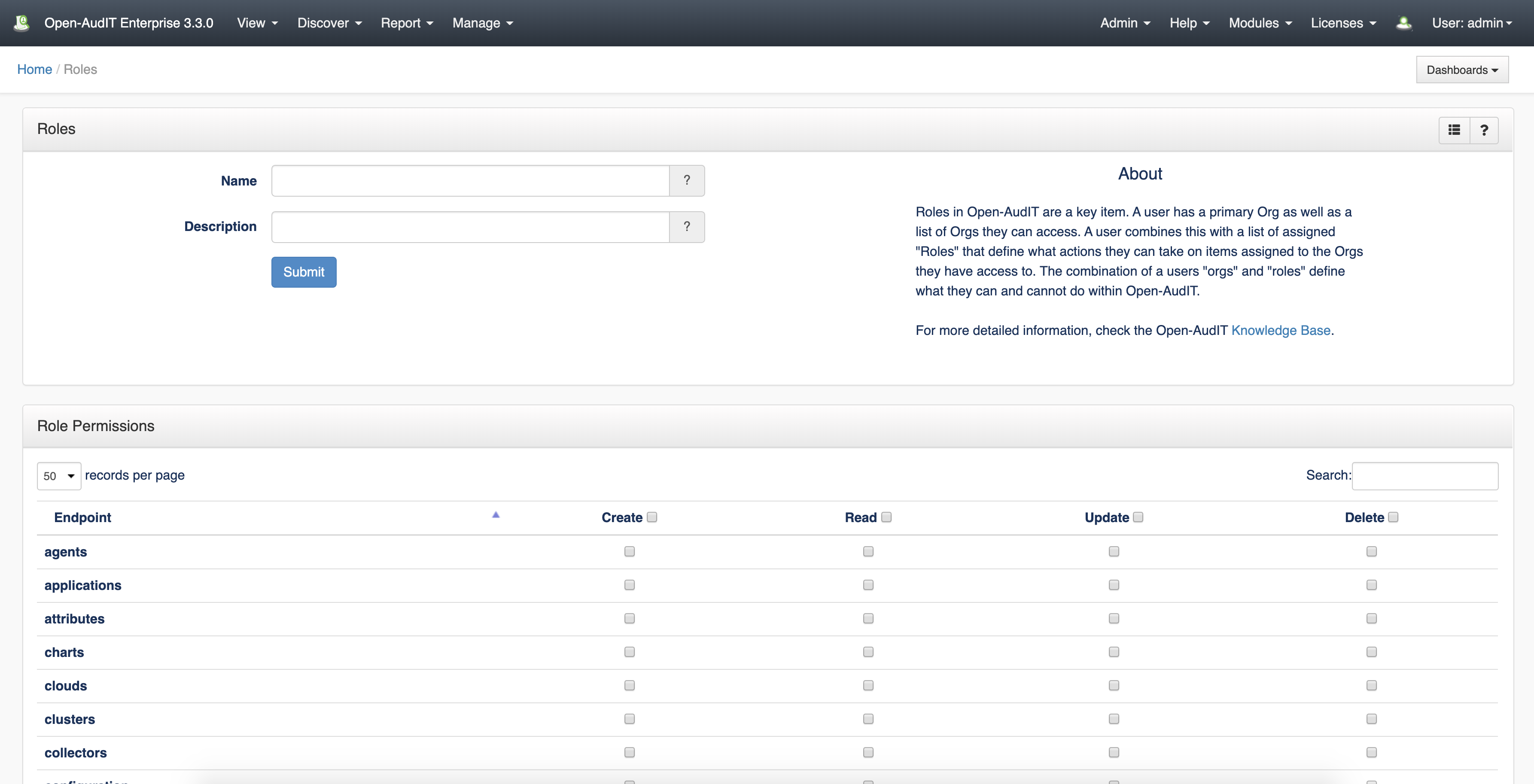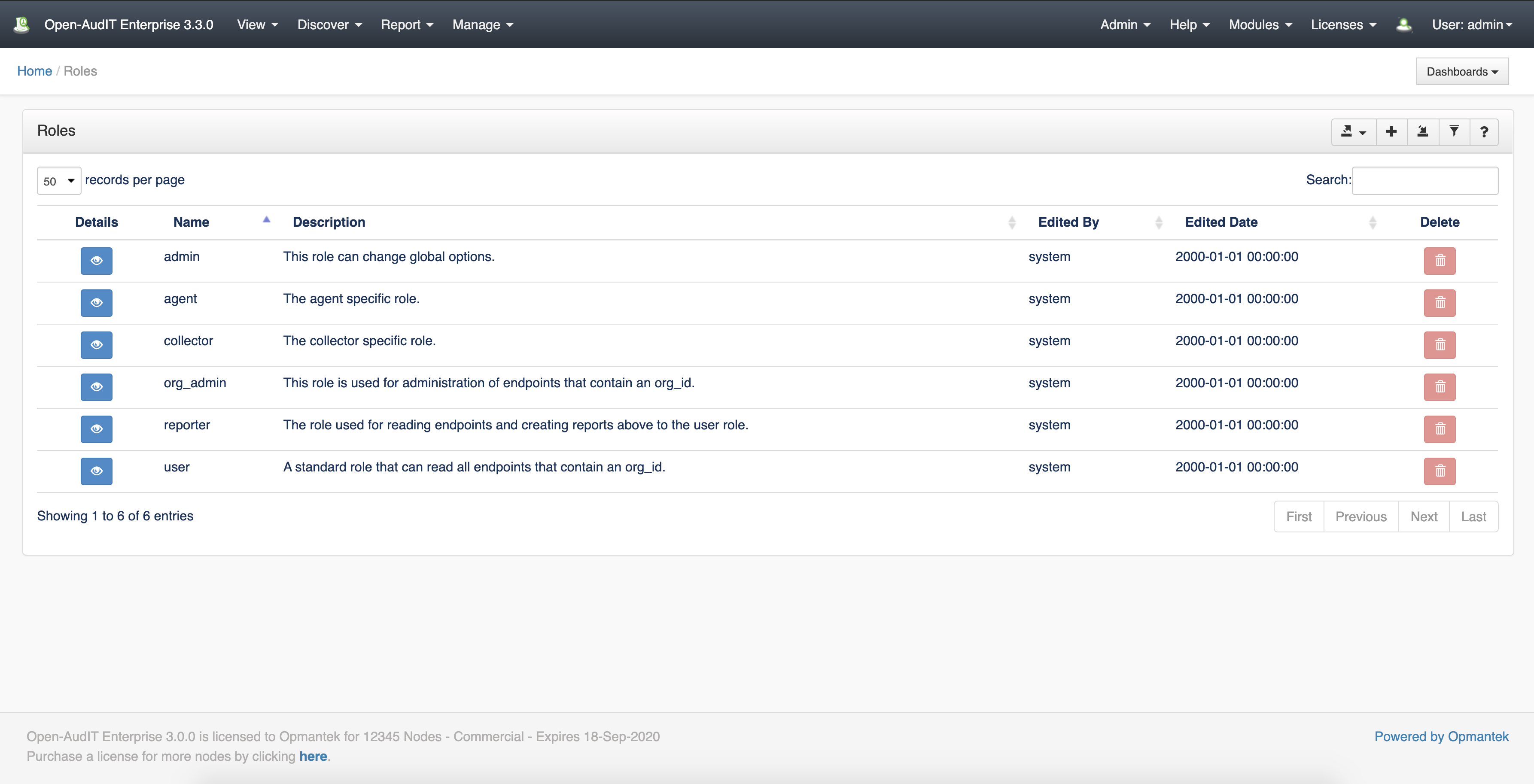...
To add a new user to Open-AudIT you have to provide the details of that person, assign the organization, select the relevant Roles (multiple roles can be selected), select if the user is active or not, etc. In addition, you must grant permission to that user to access one or more organizations. It is important to notice that selecting a parent organization will automatically provide access to its children.
View Role Details
...
Database Schema
The schema for the database is below. It can also be found in the application is the user has database::read permission by going to menu: Manage -> Database -> List, then clicking on the "roles" table.
| Code Block | ||||||
|---|---|---|---|---|---|---|
| ||||||
CREATE TABLE `roles` ( `id` int(10) unsigned NOT NULL AUTO_INCREMENT, `name` varchar(200) NOT NULL DEFAULT '', `description` text NOT NULL, `permissions` text NOT NULL, `ad_group` varchar(100) NOT NULL DEFAULT '', `edited_by` varchar(200) NOT NULL DEFAULT '', `edited_date` datetime NOT NULL DEFAULT '2000-01-01 00:00:00', PRIMARY KEY (`id`) ) ENGINE=InnoDB AUTO_INCREMENT=7 DEFAULT CHARSET=utf8; |
A typical entry looks as below.
| Code Block | ||||||
|---|---|---|---|---|---|---|
| ||||||
id: 1
name: admin
description: This role can change global options.
permissions: {"attributes":"crud","baselines":"crud","configuration":"crud","database":"crud","errors":"r","groups":"crud","ldap_servers":"crud","logs":"crud","nmis":"crud","queries":"crud","reports":"r","roles":"crud","search":"crud","sessions":"crud","summaries":"crud","tasks":"crud"}
ad_group: open-audit_roles_admin
edited_by: system
edited_date: 2000-01-01 00:00:00 |
...
The API routes below are usable from both a JSON Restful API and the web interface. The Web application routes are specifically designed to be called from the web interface (a browser).
API Routes
Request Method | ID | Action | Resulting Function | Permission Required | URL Example | Notes | Example Response |
|---|---|---|---|---|---|---|---|
| POST | n |
| create | roles::create | /roles | Insert a new role entry. | roles_create.json | ||
| GET | y |
| read | roles::read | /roles/{id} | Returns a role details. | roles_read.json | |
| PATCH | y |
| update | roles::update | /roles/{id} | Update an attribute of a role entry. | roles_update.json | |
| DELETE | y |
| delete | roles::delete | /roles/{id} | Delete a role entry. | roles_delete.json | |
| GET | n |
| collection | roles::read | /roles | Returns a list of roles. | roles_collection.json |
Web Application Routes
Request Method | ID | Action | Resulting Function | Permission Required | URL Example | Notes |
|---|---|---|---|---|---|---|
| GET | n | create | create_form | roles::create | /roles/create | Displays a standard web form for submission to POST /roles. |
| GET | y | update | update_form | roles::update | /roles/{id}/update | Show the role details with the option to update attributes using PATCH to /roles/{id} |
...





